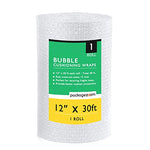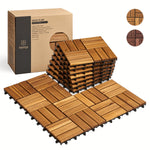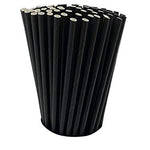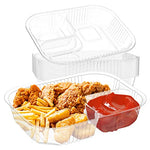You have no items in your shopping cart.
In an era where environmental concerns have taken center stage, the concept of recycling has gained immense importance. PCR (Post-Consumer Recycled) material is a crucial aspect of the recycling process that plays a vital role in conserving resources and reducing waste. This comprehensive article will delve deep into the world of PCR material, exploring its definition, applications, benefits, and the impact it has on the environment.
What is PCR (Post-Consumer Recycled) Material?
PCR material, often referred to as post-consumer recycled material, is a type of recycling that involves reclaiming and reprocessing used products into new materials. Unlike pre-consumer recycling, which involves recycling industrial waste during the manufacturing process, PCR recycling deals with items that have already served their primary purpose and been discarded by consumers. The purpose of PCR is to extend the lifecycle of products and reduce the burden on natural resources by turning waste into valuable raw materials.
The Process of PCR (Post-Consumer Recycled) Material
The recycling journey of PCR material begins with the collection and sorting of discarded products. These items are then cleaned and processed to remove any impurities. Once the materials are sorted and purified, they undergo various treatments, such as shredding, melting, and extrusion, to transform them into usable raw materials. These materials can be utilized in the production of a wide range of products, including packaging materials, textiles, and more.
Benefits of PCR (Post-Consumer Recycled) Material
Recycling PCR material offers numerous advantages that significantly contribute to environmental preservation:
1. Conservation of Natural Resources
PCR material reduces the need for virgin raw materials, which helps conserve valuable natural resources like timber, water, and minerals. By using recycled materials, we minimize the strain on ecosystems and promote sustainable resource management.
2. Energy Savings
The recycling process consumes less energy compared to the production of new materials from scratch. By opting for PCR material, we can significantly reduce energy consumption and lower greenhouse gas emissions, thereby combating climate change.
3. Waste Reduction
Utilizing PCR material diverts waste from landfills and incineration facilities, effectively reducing the volume of waste that contributes to pollution and environmental degradation.
4. Lower Carbon Footprint
By incorporating PCR material into manufacturing processes, industries can lower their carbon footprint, making significant strides towards achieving carbon neutrality.
5. Circular Economy Promotion
PCR material plays a crucial role in promoting a circular economy, where products are designed to be recyclable, thus reducing the consumption of finite resources and minimizing waste generation.
6. Environmental Impact Mitigation
By recycling post-consumer materials, we mitigate the environmental impact associated with the extraction and processing of new raw materials, helping to protect natural habitats and biodiversity.
Applications of PCR (Post-Consumer Recycled) Material
PCR material has a wide range of applications across various industries, which include, but are not limited to:
1. Packaging Industry
The packaging industry is one of the largest beneficiaries of PCR material. Recycled plastics and paperboard find applications in the production of sustainable packaging solutions, reducing the environmental impact of single-use materials.
2. Textiles and Apparel
PCR material is increasingly finding its way into the textile and apparel industry. Recycled fibers are used in manufacturing sustainable clothing, reducing the need for virgin materials and promoting eco-friendly fashion.
3. Construction and Building Materials
The construction sector has embraced the use of PCR material in creating building materials such as recycled steel, concrete, and glass, which contribute to sustainable and eco-conscious construction practices.
4. Electronics
Recycled electronic components, like printed circuit boards, are being utilized in the production of new electronic devices, aiding in reducing electronic waste.
5. Automotive Industry
The automotive industry is exploring the integration of PCR material in vehicle components, making cars more eco-friendly and supporting a circular economy approach.
6. Furniture and Home Decor
Furniture manufacturers are increasingly incorporating PCR material in their products, offering consumers sustainable and environmentally friendly choices for their homes.
The Environmental Impact of PCR (Post-Consumer Recycled) Material
The adoption of PCR material has significant positive effects on the environment:
1. Reduced Landfill Waste
PCR recycling diverts waste from landfills, which not only minimizes landfill pollution but also frees up valuable land for other purposes.
2. Lower Greenhouse Gas Emissions
The recycling process emits fewer greenhouse gases compared to traditional manufacturing methods, thereby contributing to climate change mitigation.
3. Lower Energy Consumption
Recycling PCR material requires less energy than producing new materials from raw resources, leading to reduced energy consumption and a smaller carbon footprint.
4. Water Conservation
By utilizing recycled materials, the demand for water in the production process is reduced, benefiting water-stressed regions.
The Role of PCR (Post-Consumer Recycled) Material in Sustainability
PCR material plays a pivotal role in achieving sustainable development and addressing environmental challenges. It aligns with the principles of the 3R approach – Reduce, Reuse, Recycle – by extending the life of products, reducing waste, and minimizing the demand for new raw materials. This approach aids in resource conservation, promoting economic growth while safeguarding the planet for future generations.
FAQs
Here are some frequently asked questions about PCR (Post-Consumer Recycled) material:
Q: Is PCR material of inferior quality compared to virgin materials?
PCR material, when processed correctly, can have comparable quality to virgin materials. Advancements in recycling technology and stringent quality controls ensure that PCR material meets industry standards.
Q: Can PCR material be recycled indefinitely?
While PCR material can be recycled multiple times, it may experience some degradation with each recycling cycle. However, technological innovations are improving the recyclability of materials, increasing their lifespan.
Q: How can individuals contribute to PCR recycling?
Individuals can actively participate in PCR recycling by segregating recyclable waste at home, promoting responsible consumption, and choosing products made from recycled materials.
Q: Is PCR material more expensive than traditional materials?
Initially, PCR material may be slightly more expensive due to the recycling process. However, as demand grows and recycling becomes more prevalent, costs are expected to decrease, making it more economically viable.
Q: Does PCR material help combat climate change?
Yes, using PCR material reduces the carbon footprint associated with manufacturing, leading to a positive impact on climate change mitigation.
Q: What is the future outlook for PCR material adoption?
The future looks promising for PCR material adoption as consumers and industries become increasingly environmentally conscious. With supportive policies and awareness campaigns, the demand for PCR material is likely to surge.
PCR (Post-Consumer Recycled) material serves as a cornerstone in the pursuit of sustainable practices and environmental preservation. Through its recycling process, PCR material significantly contributes to reducing waste, conserving natural resources, and mitigating climate change. As we continue to embrace recycling and incorporate PCR material into various industries, we move closer to creating a circular economy and fostering a greener, more sustainable future for generations to come.








